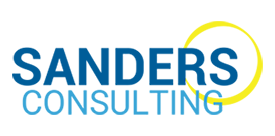Kindness at Work: Building Trust Through Transparency
INTRODUCTION
We see kindness as a foundation for increasing change capacity in organizations. Let’s go a little deeper into what influences kindness and change capacity.
WHAT INFLUENCES KINDNESS & CHANGE CAPACITY
By our definition, kindness at work means behaving in ways that increase human capacities for productivity, innovation and supporting people living a full life.
Trust is essential for kind workplaces. Focusing on transparent communication is a great way to start building more trust at work. People hear what’s going on in an organization through formal and informal channels.
Formal communication channels can help build trust through transparency. Transparent communication is the open sharing of information with periodic discussions of:
- what the information means and why it’s relevant,
- how it connects to other information we might have
- what we will do based on the information we have
The focus is on sharing and discussing information widely and then following up with the results of the actions that were taken to discuss their implications. It isn’t a series of emailed FYIs that leave people feeling buried in details that they don’t have the time or energy to track. Even if they did follow along diligently, they often don’t have the authority or opportunity to do anything about it.
Transparent communication is time-consuming and might feel (and look) like leadership is giving up some control. It is. We encourage working intentionally to decrease secrecy and the power differential that comes from withholding information. The advantages of this approach are significant. Instead of your people investing energy into stories about why they aren’t ‘in the loop’, they have the opportunity to engage in constructive, informed discussions. Some leaders might believe that if they hold back key information, there is less for employees to “worry about”–but people are anxious to make rational sense of the world around them—and will work hard to do so.
Leaders might be frustrated when confronted with distorted versions of reality, but if they aren’t consciously and consistently sharing foundational information, they have helped create an environment where rumors flourish. People are always making meaning with the information available to them and stories will be shaped with or without information from leadership.
It might seem like we are advocating inviting everyone into conversations about everything, whether they have something useful to contribute or not. Actual transparent communication doesn’t pre-judge whose contributions will be useful but will also be clear as to when and how those contributions can help the overall discussion and what impact they will have. Time limitations are real and timelines are a necessity.
For example, given the chance, everyone will want to comment on next year’s proposed budget. You could suggest what kinds of comments and suggestions will be most useful, when you need them, and what kinds of comments are less useful. After final budget decisions have been made, you might share the highlights and how difficult decisions were made, recognizing input, but not necessarily following all suggestions.
WANT TO KNOW HOW TO START?
We’ve found these questions to be helpful starting points for trust-building conversations within change initiatives we’ve led:
- Why do we need to make this change or explore this opportunity?
- What kinds of input are we looking for at this time?
- How should decisions be made?
- What information is missing?
- How will we know if we’ve made a good or poor decision?
- How will we course correct if/when things don’t go as planned?
Transparent communication may be a new approach within some organizations. It will raise the volume of discussion by engaging many more people with views to contribute. Done well, it will result in better decisions as well as a more engaged organization. In the process, we can build one of the core attributes of kindness, trust.
WANT TO LEARN MORE?
We will be going into more detail on this topic during our FREE webinar Wednesday, Oct. 26 from 11:30 a.m. – Noon CDT. Register here.




